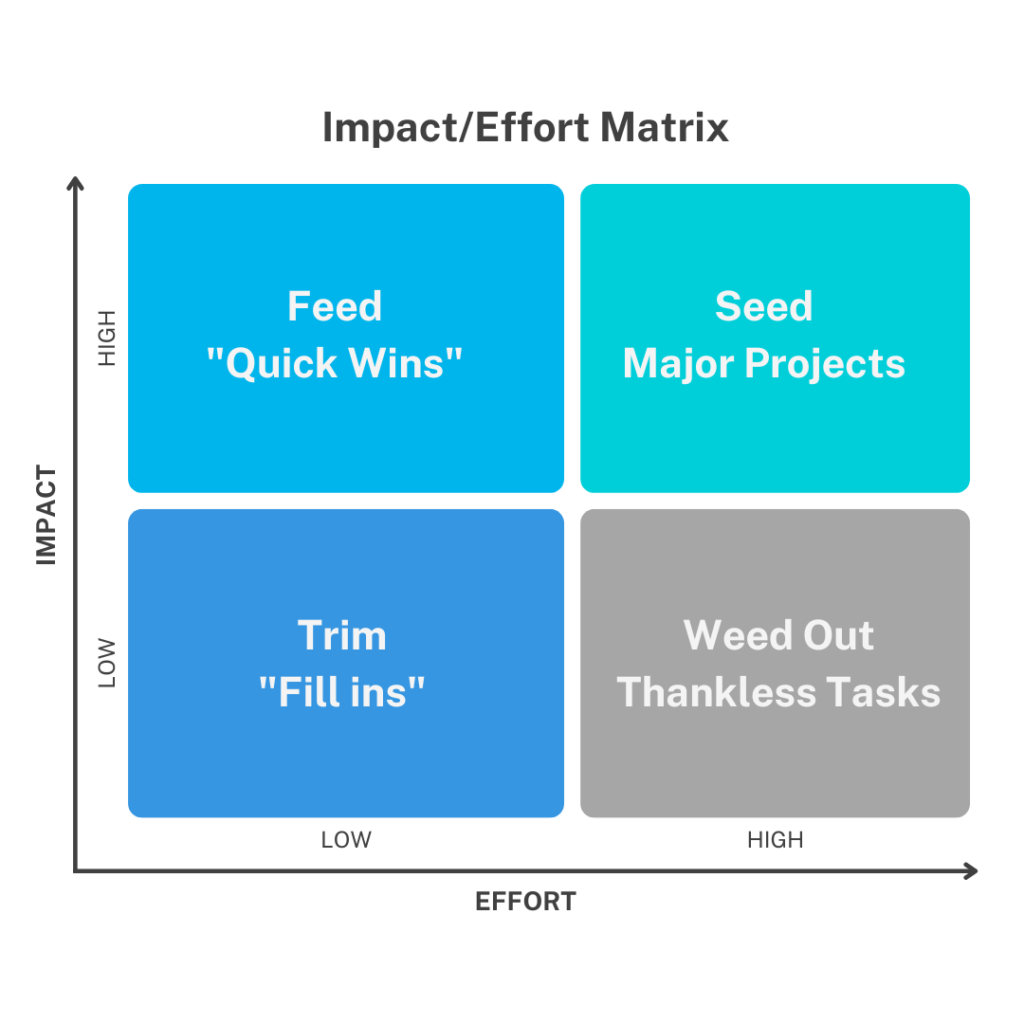In my article on managing through fear in business during uncertain times, I talked about how companies need to revisit their current strategy with precision.
They need to lay out the different initiatives from their current strategy in three buckets to manage changing business priorities during an economic slowdown.
- What will you feed?
- What will you seed?
- What will you trim?
During times of economic uncertainty, fear and emotions run high among teams.
Emotional dynamics may affect our ability to step back and think critically about how we adjust our priorities.
For example, executives grow attached to the projects they champion.
They don’t want to lose star performers who they put in charge of projects and may save an initiative in order to retain talent.
When business priorities change during a downturn, senior leaders need an objective way to re-align financial and operational resources.
I help clients in media, retail, and consumer products, operationalize their business priorities so their teams are clear on what to do and how to get there.
Depending on the size of the organization, the process for evaluating strategic initiatives can range from having a set of lively workshop meetings to a weeks-long project involving a formal project management office tracking costs and value created by each initiative.
They all have the same fundamental logic behind what we’re trying to do.
Here’s how I approach prioritizing strategic projects during a downturn in 4 steps.
Step #1: Write down your business objectives
Revisit your company’s strategic priorities and ask yourself: How should they change during the economic slowdown or a potential downturn?
What are the top 2-3 challenges facing our company in the short term? In the long-term?
- Near-term challenges during a downturn typically change to managing the company’s financial health and retaining core existing customers.
- Long-term challenges typically remain as building capabilities to gain a competitive advantage, however, the appetite for taking on big bets may change.
Step #2: List each project and map to your business objectives
Once you have defined your objectives, you can start mapping your projects to them. What activities or deliverables need to be completed in order to achieve each objective?
As you map out your projects, you may find that some of your original objectives no longer make sense, or a project doesn’t neatly fit into one or any of your business objectives.
That’s OK! Aim to categorize the top 20 strategic projects or so.
Step #3: Score strategic projects based on the impact and effort required for each
To score a project, use a 0 to 10 scale for Impact, and another 0 to 10 scale for Effort. This will enable you to place them in a 2×2 matrix below.
Clearly define how you measure impact and effort against business objectives. For example, the impact of a project can be quantified in cost savings, and incremental revenue dollars.
Effort can be measured as hard cost, capital utilization, people, or work hours.
Step #4: Place each top initiative in the prioritization matrix based on the effort and impact scores

- Feed as many “Quick Wins” as possible.
- Re-assess your “Major Projects” and ask yourself if any can be delayed or scaled down in the near term without risking their future payout. There will be a natural tension between short-term and long-term value creation.
- Do as few “Fill in” projects as possible.
- De-prioritize or stop as many “Thankless Tasks” as possible.
Reprioritizing strategic projects and activities during an economic slowdown is essential to recalibrating your company’s strategy and allocating precious capital and resources against your modified business priorities.
While this effort takes time and effort across finance, strategy, and operations, it will position your company to not only survive but grow
I write about business strategy and finance. If you found this helpful, please share it.
I appreciate your support.
Learn more about how I help clients in strategy here.

